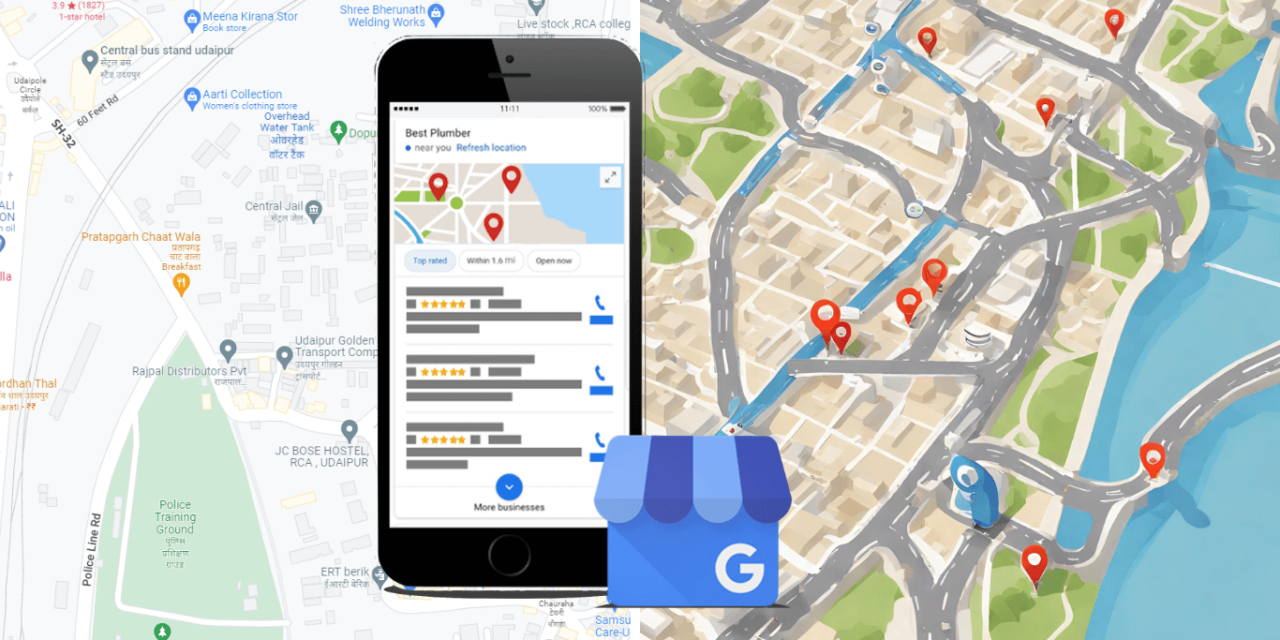Picture this- you’re in a new neighbourhood, on the hunt for a lunch spot or perhaps you find yourself stuck with a flat tire and need a reliable mechanic. Where’s your go-to solution? If your answer is Google Maps, you’re not alone.
In today’s world, many of us turn to Google Maps to unearth local businesses and make informed decisions about where to spend our hard-earned cash. So, if you’re a local business, you might be wondering how to shine on this digital stage, rank higher, attract more visitors, and win over more customers via Google Maps.
Well, you’re in the right place! Here are ten simple steps to make your local business stand out in the world of Google Maps:
1. Claim and Complete Your Google Business Profile: First things first, you need to let Google know you exist! Claim and optimize your Google Business Profile (formerly known as Google My Business or GMB). It’s as easy as searching for your business name on Google or Google Maps and verifying your listing if you haven’t already. Keep this information up to date because Google loves accuracy.

2. Post Engaging Content (Including Photos): Your journey doesn’t end with claiming your profile. Google loves businesses that stay active, so make regular updates to your GMB profile. Share special offers, event details, blog posts, or just updates about your business. And don’t forget to toss in some eye-catching photos because, let’s face it, visuals are worth a thousand words.
3. Optimize Your Web Presence for Local Search: Your website and other online content should be optimized for your local audience. Dive into local SEO to figure out where to focus your efforts. Make sure your website is structured for easy navigation, stuffed with relevant keywords, and linked both internally and externally to provide answers to your audience’s burning questions.
4. Use Local Business Schema: Ever heard of schema? It’s a neat way to structure your content for Google to devour. Local business schema wraps code around your content to make it more Google-friendly. It’s like serving your favourite dish on a silver platter.

5. Embed Google Maps on Your Contact Us Page: While it’s not a Google rule, embedding a Google Map on your website makes perfect sense. It ensures a consistent user experience and showcases your location, which helps your potential customers find you easily.
6. Nurture and Manage Your Reviews: Customer reviews matter—a lot! Google keeps an eye on the quantity of your reviews and how you respond to them, whether they’re a bouquet or a brickbat. Don’t fret about the occasional negative review; address it professionally, and it could even show your commitment to top-notch service. Although customers have the option to leave reviews on various online platforms, reviews posted on GBP profiles bear greater significance when it comes to influencing Google Map rankings. A proactive approach to getting reviews from your customers, especially after a successful product or service delivery when a positive experience is at the forefront of their minds, can significantly enhance your business’s online presence and reputation.

7. Update Your Local Listings with NAP: Your Name, Address and Phone Number (NAP) should be consistent and accurate across the web. Google and your customers love it when they know where to find you. To find and ensure your NAP is up to date, you can start by simply searching your business name and noting all of the places your business details can be found. Check each instance and reach out to each directory or website owner to update this important contact information, as needed.
8. Build Local Backlinks: Backlinks are your friend. Encourage local third-party websites to link to your pages. It’s like having a chorus of voices vouching for you. These backlinks serve as validation for your business, nurturing both its local presence and its credibility in the context of products and services. If you maintain listings with links in local directories, it’s crucial to ensure that these listings are accurately categorized if such options are available.
The ideal scenario involves these links to your website being “follow” links. This means that Google will not only acknowledge these links but also trace them back to the source of your content. While many directories recognize the value of “follow” links and may charge for their inclusion, it’s wise to keep an eye out for opportunities to secure links from non-paid sources. These can include relevant partners, industry associations, or service organizations’ websites.
9. Encourage check-ins & social media mentions: Whenever customers check in at your spot via Google Maps or talk about your business on social media platforms, it works wonders for visibility and interaction. To make it even better, you can introduce incentives for those who check in, like discounts on purchases or complimentary items. Consider crafting hashtags exclusively for your business. When customers use these hashtags in their posts, it simplifies the process of potential customers discovering your business and joining the conversation.
10. Keep an Eye on Your Rankings: Monitor your progress. Google Maps and regular search engine results pages (SERPs) are where you want to shine. Use rank monitoring tools and focus on long-tail keywords, which may not have massive search volumes individually, but they add up, trust us!
So, there you have it. Put your business on the Google Map, and over time, you’ll build a strong online presence that mirrors your real-world reputation. Google rewards businesses that provide answers, deliver quality, actively participate in their community, earn positive reviews, and provide outstanding customer service. If that sounds like your business, you’re on the right track! Get out there and show the world what you’ve got.





